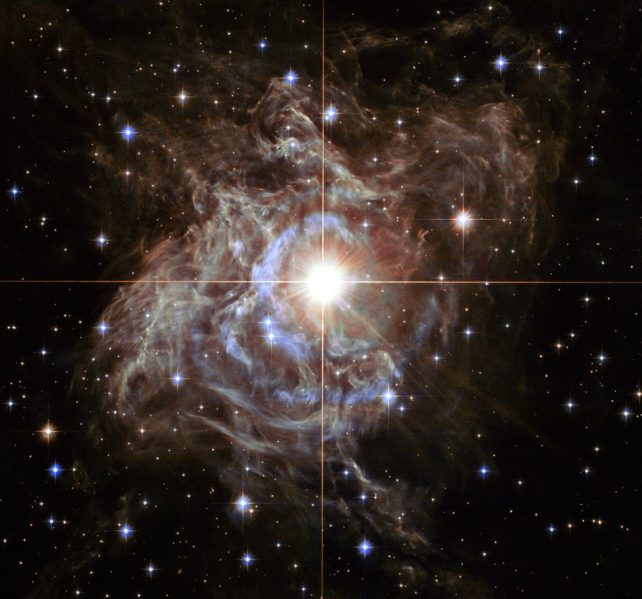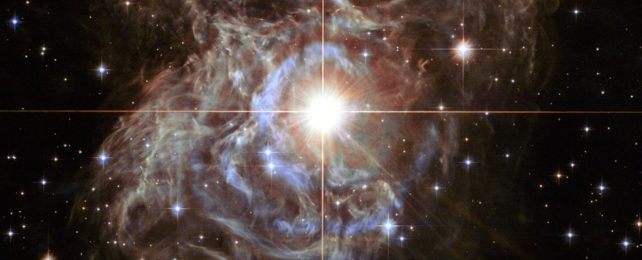You can now listen to the sounds of the space around one of the Milky Way's most spectacular stars.
RS Puppis, a Cepheid variable star around 6,500 light-years away, has gotten the data sonification treatment by the sci-art outreach project SYSTEM Sounds. They took a Hubble image of the star and transcribed the light into sound, assigning pitch to the direction from the center of the image and volume to the brightness of the light.
As you listen to the below sounds, a higher pitch can be heard at the top of the image and lower at the bottom; the left and right will play in their respective speakers if surround sound is active.
As the circle closes in on the bright star in the center, the sound gets louder, ending on a single convergence of sound.

Sonifying the Universe offers another way to experience the wonders of the cosmos, but there are some really useful reasons to do so, as well.
For one, converting visual data into auditory data makes it more accessible to people with limited vision or blindness. It can also make complex concepts easier to understand by offering a new perspective.
It can also reveal details in the data that may be overlooked in its original form by showing patterns, weaker signals, or information that would be lost in the noise.
For something like a Cepheid variable star, that would be a powerful tool as they are among the most useful stars in the galaxy.
These stars regularly vary in brightness; for RS Puppis, the period is about six weeks. Many stars vary in brightness, but for Cepheid variables, there is a known and distinct relationship between the star's brightness and its periodicity.
So, once you have the timing of a Cepheid variable, you can work out exactly how intrinsically bright it is – not how bright it appears to us on Earth, but how much light it actually emits. And if you know how bright something is, you can work out how far away it is. This means we can use Cepheid variables to map distances in the galaxy.

RS Puppis, the brightest Cepheid variable with an average brightness 15,000 times that of the Sun, is also surrounded by dust. When the star brightens, it sends a brighter burst of light out into the dust. This light is reflected off the dust, producing a light echo; this is what makes the beautiful silvery rings form around the star.
By studying these rings, scientists can understand the dust and its properties, which can tell us more about the stuff that fills the space between the stars.
This sonification of RS Puppis seems more for the purposes of outreach than science, and the star is extraordinarily well-studied anyway, so it's not clear if we'll learn anything new from the conversion.
But it's nice to have a new way to experience one of our favorite stars.
